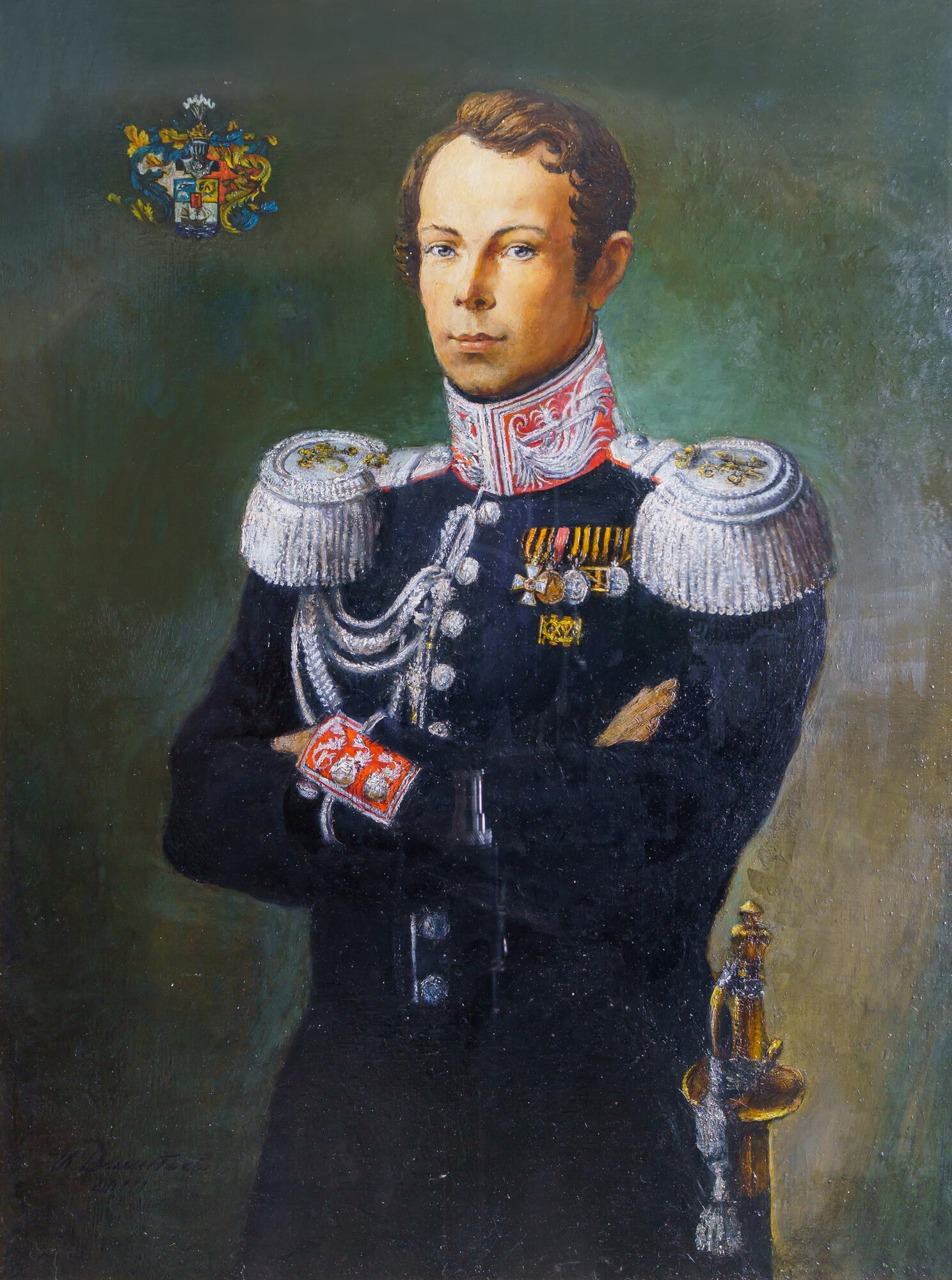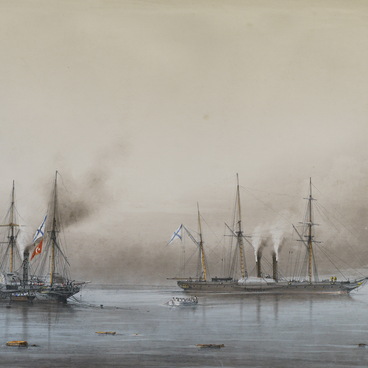Alexander Ivanovich Kazarsky was born into the family of a retired governorate secretary on June 16, 1797. He studied at a church and parochial school and was sent to the Black Sea Navigation School in Nikolaev. In 1811, Kazarsky joined the navy as a student at the Navigation School.
On August 30, 1813, Kazarsky became a naval cadet of the Black Sea Fleet. In 1814, he was promoted to the rank of midshipman. At the beginning of his naval career, Kazarsky sailed on the “Desna” and “Cleopatra” brigantines that transported cargo between Black Sea ports, and later, at his own wish, he was transferred to the Danube Flotilla where he commanded a detachment of rowboats in Izmail. In 1819, Kazarsky was promoted to the rank of lieutenant and was appointed to the “Evstafi” frigate. In 1828, Kazarsky commanded the “Sopernik” carrier vessel armed with a licorne: while larger ships could not approach the Anapa Fortress in the shallow waters, “Sopernik” maneuvered successfully and fired on its fortifications.
In 1829, Kazarsky was appointed commander of the “Mercury” brig. Led by lieutenant commander Alexander Kazarsky, the brig accomplished one of the greatest feats in the history of the Russian Navy by battling against the Turkish ships “Selimiye” and “Real-bei” that had ten times as many pieces of artillery. The crew of the Russian brig under the command of Kazarsky achieved a resounding victory by inflicting such damage on enemy ships that they had to withdraw. In 1829 and 1830, Kazarsky commanded larger ships — the 44-gun “Pospeshny” frigate and the 60-gun “Tenedos” frigate.
In 1831, for his distinguished service, Alexander Kazarsky was promoted to the rank of first-class captain and became a member of the retinue of Emperor Nicholas I. As part of the retinue, he was sent to Kazan to determine the future of the Kazan Admiralty. After that, Kazarsky was sent on an expedition along the rivers and lakes to identify the water route from the White Sea to Lake Onega.
In 1833, Kazarsky was assigned with reviewing and auditing the financial activities of offices and warehouses in the Black Sea ports. During the expedition, he died unexpectedly in Nikolaev. According to one of the versions, his coffee was poisoned with arsenic.
Russian and Soviet ships were named after Kazarsky, and a monument to Kazarsky was established in Sevastopol.
On August 30, 1813, Kazarsky became a naval cadet of the Black Sea Fleet. In 1814, he was promoted to the rank of midshipman. At the beginning of his naval career, Kazarsky sailed on the “Desna” and “Cleopatra” brigantines that transported cargo between Black Sea ports, and later, at his own wish, he was transferred to the Danube Flotilla where he commanded a detachment of rowboats in Izmail. In 1819, Kazarsky was promoted to the rank of lieutenant and was appointed to the “Evstafi” frigate. In 1828, Kazarsky commanded the “Sopernik” carrier vessel armed with a licorne: while larger ships could not approach the Anapa Fortress in the shallow waters, “Sopernik” maneuvered successfully and fired on its fortifications.
In 1829, Kazarsky was appointed commander of the “Mercury” brig. Led by lieutenant commander Alexander Kazarsky, the brig accomplished one of the greatest feats in the history of the Russian Navy by battling against the Turkish ships “Selimiye” and “Real-bei” that had ten times as many pieces of artillery. The crew of the Russian brig under the command of Kazarsky achieved a resounding victory by inflicting such damage on enemy ships that they had to withdraw. In 1829 and 1830, Kazarsky commanded larger ships — the 44-gun “Pospeshny” frigate and the 60-gun “Tenedos” frigate.
In 1831, for his distinguished service, Alexander Kazarsky was promoted to the rank of first-class captain and became a member of the retinue of Emperor Nicholas I. As part of the retinue, he was sent to Kazan to determine the future of the Kazan Admiralty. After that, Kazarsky was sent on an expedition along the rivers and lakes to identify the water route from the White Sea to Lake Onega.
In 1833, Kazarsky was assigned with reviewing and auditing the financial activities of offices and warehouses in the Black Sea ports. During the expedition, he died unexpectedly in Nikolaev. According to one of the versions, his coffee was poisoned with arsenic.
Russian and Soviet ships were named after Kazarsky, and a monument to Kazarsky was established in Sevastopol.



